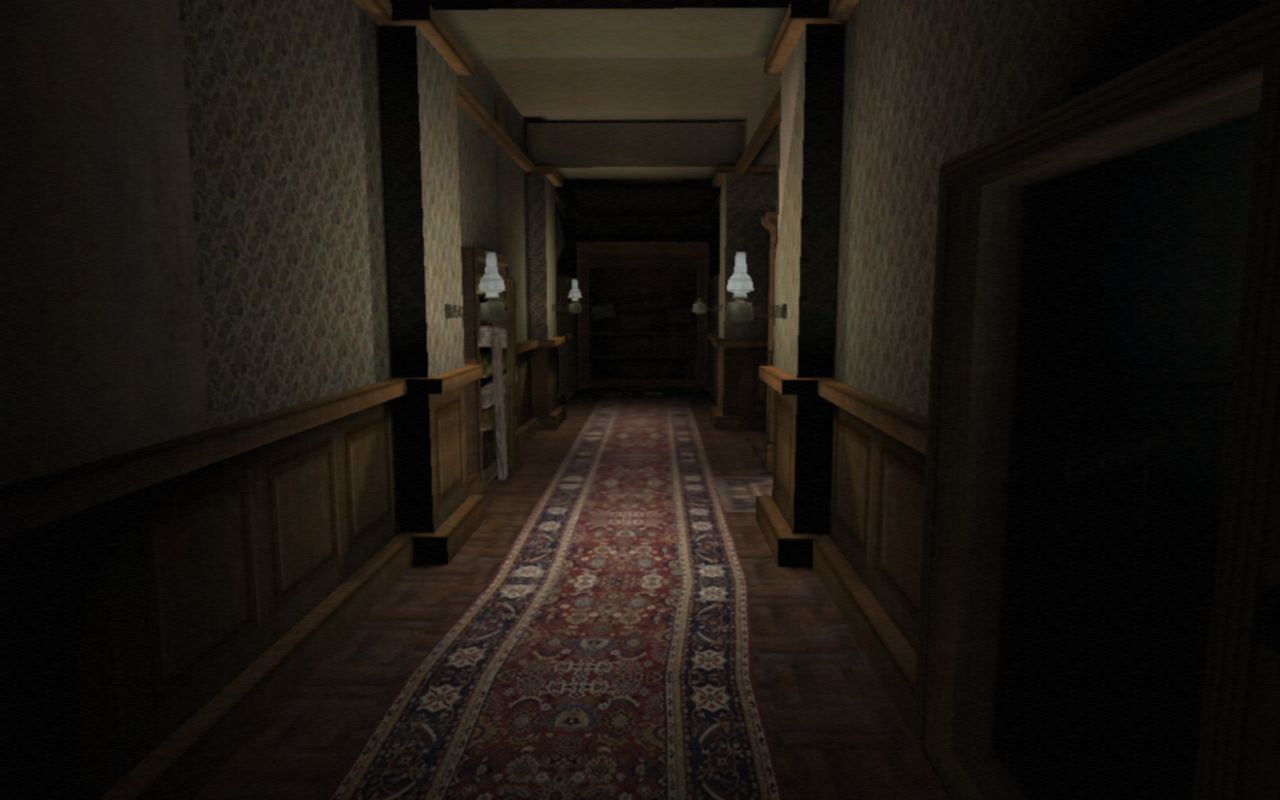A few notes about the house you explore at the very beginning of Call of Cthulhu: Dark Corners of the Earth, which fascinates me so much.
These corridors... this carpet like at Grandma's, this wallpaper, these sconces. All that wonderful twentieth-century decor that lasted right up to my childhood, gradually replaced by the horrors of IKEA and the like.
Like the house in Alone in the Dark, which I mentioned recently, there's something absolutely archetypal about the one in Dark Corners of the Earth; you feel as if you've known it intimately all your life, as if you've lived there or known people who lived there; as you explore it, you realize that you long to live there, to return there at last after a lifetime spent in crappy, soulless, warm decor.
I'd literally give a few years of life expectancy to find that again. That kind of setting and the life that goes with it.
In August 2022, I moved into a 110-square-meter duplex in a village just outside the town where I've lived and worked since 2007. I went from an all-concrete avenue as noisy as a freeway to a small street with a view, on one side, of the cemetery, and on the other, of a public park and fields as far as the eye could see. This was necessary for my survival, but I found something even better than a simple dwelling where I could escape the noise and nuisance; something as close to home as possible.
An unheard-of luxury: the feeling of finally being "at home". Having numerous rooms at my disposal to really organize my life and my work – I was able to make a separate living room, bedroom and home studio, for example. To be able to wander from room to room like a ghost alone in his domain, and not like an animal in its cage. Framing posters on walls, hanging pictures, arranging knick-knacks. The kind of thing you do once you've really settled down. There's nothing impossible about the fact that I'm going to die one day in this apartment, and it's with this frame of mind that I've settled in. A terminal lair.
The warmth of the omnipresent wood. The floral motifs, a mainstream version of Art Nouveau or the work of William Morris. You want to live there, to go to bed, to enjoy the silence, barely disturbed by the creaks of wood working, or by a clock, somewhere in the house, at regular hours.
The peace of a library. A cemetery of books dreaming peacefully in their leather coffins. Binding equals burial. As someone who works in a public library, I know that details as concrete, as vulgar, as furnishings, filing systems, book presentation... influence whether or not we want to browse the shelves, to be tempted by an unfamiliar book – or not.
I've always dreamed of having the space and furniture to leave books, diaries, drafts, sketches, notes... lying around. To never have to walk more than a metre or two to scribble whatever pops into my head, without pulling out my smartphone and waiting for Google Keep to launch, update and open a new document. Where have the manuscripts gone in our lives?
Thinking back over the last twenty years to my past companions, I realize that for some of them I've hardly ever seen their handwriting. I'd be perfectly capable of not recognizing it in the midst of others. How did we come to set aside something as personal, as unique as that? I'm not one of those people who makes a conventional exclamation about the famous smell of books as soon as we talk about tablets, PDFs and so on. I'm the first to spend my life between two e-mails, two blog posts, two Libre Office documents or Notepad +, and I love it. But I have to admit that it's tiring, less immediate than paper, and leaves virtually no trace.
When I die, no one will be looking to see if I have an Evernote account with unpublished novels on it, or any earth-shattering revelations on any subject. And while it's easy to open an old Moleskine full of notes and sketches with nostalgia and tenderness, it's rare to come back to your old Word documents.
I'm simplifying, of course... But what luxury, then, in this dark, haunted house, are all these grimoires and journals lying around, unique copies, infinitely fragile and therefore precious, bearing the handwriting of their author, and as such, almost an extension of their body as much as their mind.
And frankly, who can imagine a Necronomicon in PDF format?





Aucun commentaire:
Enregistrer un commentaire